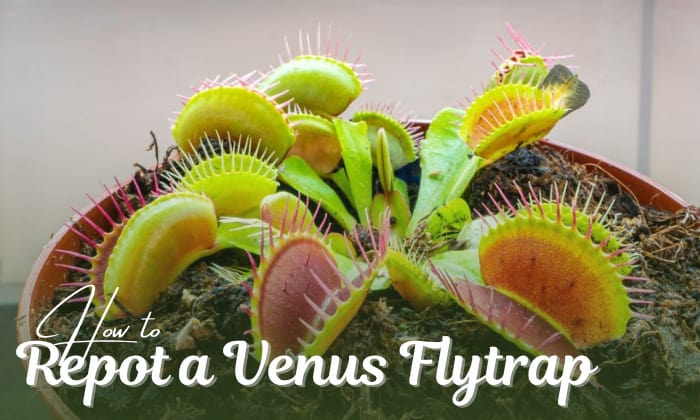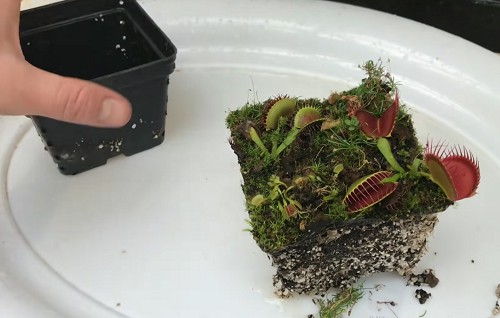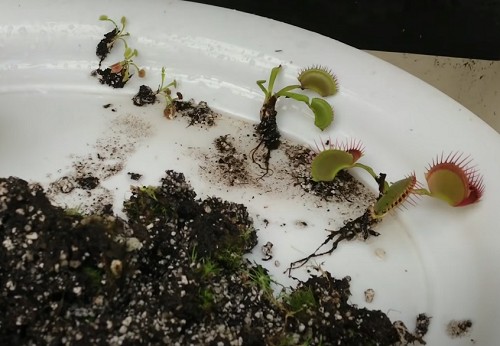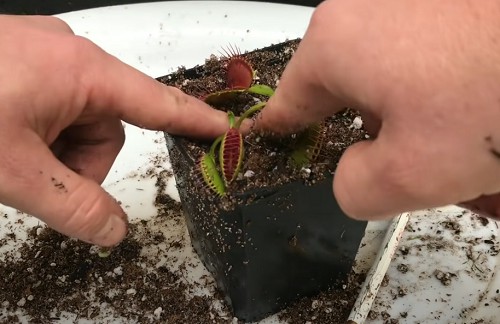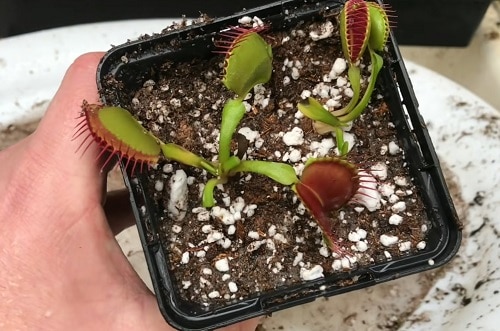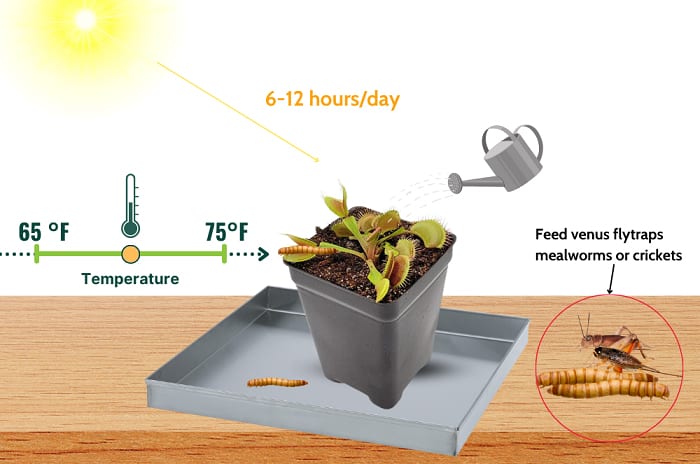Possessing nectar that attracts insects and jaws to lock them in, venus flytraps are the source of fascination for many gardening enthusiasts.
If there is no shortage of insects in your home and you want a plant that can eat bugs, growing this carnivorous plant is a nice thought to consider. But first, you need to know how to repot a venus flytrap to keep it healthy. In this case, check out the steps below.
Table of Contents
Step-by-step to Repot a Venus Flytrap
1. Before Repotting a Venus Flytrap, You Should
Pick the correct container and potting soil for the plant.
The new container for venus fly trap should be one or two inches bigger than the old one. It should measure at least four inches deep and have drain holes at the bottom.
In terms of materials, glazed clay and plastic are preferable, so opt for these to ensure adequate insulation.
When selecting the potting medium, it’s best that you avoid all products with fertilizer or additives. Unlike other plants, venus flytraps will not survive if you feed them with anything that’s not water and insects.
So, combine equal parts of peat moss and perlite to create your venus fly trap soil.
You may also purchase a carnivorous potting mix if it’s tough to find pure ingredients in gardening stores. The soil B&Q and big box shops sell usually have fertilizers or lack essential components like peat, so Amazon may be the best route.
Prepare a dip tray
This tray will hold water to keep the plant hydrated. It should be two inches tall or spacious enough to contain an inch of water. The moisture from the tray has the extra benefit of keeping the venus flytrap humid without misting it.
2. Detailed Steps for Replanting Venus Fly Trap
Step 1. Put your potting mix in the new container.
Fill the bottom of the new container with peat moss and perlite, leaving only a fourth of the receptacle empty. Dampen the mix with distilled or rainwater instead of tap water. Do not use liquids with salt or chlorine.
Step 2. Remove the plant from its current container.
Lift the venus flytrap from its place by grabbing the plant base. Be gentle and avoid damaging the roots and rhizomes. If you have trouble getting the plant out, try shaking the container or squeezing its sides.
Just as importantly, avoid touching the traps so that the plant won’t waste its energy trying to catch insects when there are none—this can weaken and shorten its lifespan.
Step 3. Clean the plant and/or divide it (optional).
If your venus plant has over ten traps, you can divide it before repotting.
But first, use a mister to spray the roots and shake off all old soil. During this process, stick to the same water types we specified above, or you may harm the plant.
Note that the washing step is essential if you’ve accidentally fertilized your old potting mix or recently brought the venus flytrap home from a nursery. Commercial growers often don’t use appropriate soil types for their products before selling them to buyers, which is why you should give your plant a fresh start.
Once you’re done washing the roots, divide the venus flytrap by separating it at the rhizomes or the white bulbous parts at the bottom.
Step 4. Replant a venus fly trap.
Before repotting a venus fly trap, make a hole in the new soil with your finger. Put your plant in it, ensuring to cover the roots but not the foliage.
If you want to repot a baby venus fly trap, the step is the same. Simply put the divided section into the new container mix, then backfill the hole if necessary.
Step 5. Care for the plant.
-
- Care for a venus fly trap in pot by giving it six to twelve hours of direct sunlight per day. If you keep it indoors and there isn’t enough sunshine coming through windows or patios, install artificial lighting eight inches from the plant.
- Water venus fly trap using the tray we described above, which you should refill with fresh liquid whenever it gets dry. The room for the plant should measure 65 to 75℉ for optimal health and up to 70 degrees to enable dormancy.
- Feed venus flytraps mealworms or crickets as well—do not give them human food or snacks. The bugs should be live to effectively trigger the traps, and you can use tweezers for feeding if direct contact with insects seems icky. Feed one trap once a month only and not at all during winter.
- Unlike supplying food, however, watering is a task plant owners should not lay off during winter. Venus flytraps still need wet soil throughout this season.
Best Time to Repot a Venus Flytrap
As a rule of thumb, transplant a venus fly trap when it’s emerging from dormancy, around spring or early summer.
Aside from the situations we mentioned above (newly purchased plant or accidental fertilizing), repotting is equally essential if the container mix is unsuitable or there are pests in the soil or on the plant.
Another sign a change of space is necessary is an overcrowded container or less than two inches of clearance around the root ball of the venus flytrap.
You can replant at any time in these cases, no need to wait until spring, though I still recommend avoiding the flytrap’s flowering season, especially if the blossoming stalk has grown long.
FAQs
What soil is best for venus flytraps?
You should use a mixture containing 50% perlite and 50% peat moss, or repot venus fly trap sphagnum moss, or any of the following combinations:
- Sphagnum moss with perlite or silica sand in a 2:1 ratio
- Equal parts of sand and peat
- Equal amounts of sand and perlite with twice as much peat
Avoid regular potting soil, and aim for a pH of 4 to 4.5.
How often to repot venus fly traps?
Once a year is the ideal frequency, but you can replant every two to three years if the soil is still healthy and the venus flytrap has not outgrown its pot yet.
Venus flytrap pot ideas?
Any pot color is fine, but white provides the best insulation. Avoid terrariums to minimize mold or algae, and opt for wide pots if your flytrap has many leaves.
Conclusion
Venus flytraps may be tough to grow indoors, but the mechanism with which they catch prey is spectacular to watch, even more so for young children. As long as you know how to repot a venus flytrap and care for it, the plant will be a delight to have on your deck or windowsill.
Repotting other plants:

Hi, I am William – Floridayards’ digital content creator. My job is to find answers to all your concerns with thorough research and our team’s expert advice. I will also bring you honest reviews on the best products and equipment for raising your beautiful garden. Please look forward to our work!


